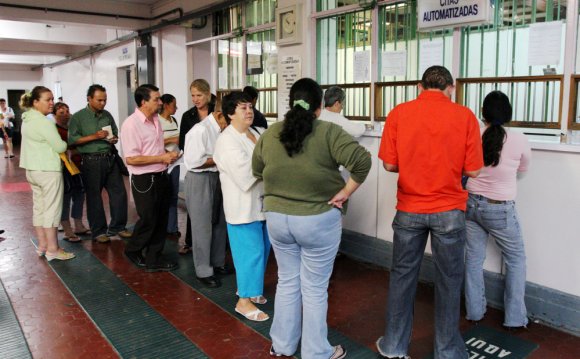
Health and aged care Costa Rica
In 1999 in Costa Rica, a big rubella outbreak took place among people elderly 15-45 many years. As a result, the Ministry of wellness adopted the purpose of eliminating rubella and congenital rubella syndrome (CRS). In 2001, a nationwide vaccination campaign reached around 1.6 million (>95per cent) persons aged 15-39 years. This report highlights effective components of the campaign, including efficient planning, collaboration among federal government ministries, social mobilization, making use of house-to-house vaccination teams, daily protection reports from neighborhood staff, vaccine security tracking, and methods for making sure an acceptable nationwide circulation. This promotion will strengthen measles eradication and lead to rubella and CRS reduction in Costa Rica.
In Costa Rica, measles vaccine had been introduced in 1967, the blended measles-rubella (MR) vaccine in 1972, and measles-mumps-rubella (MMR) in 1986 as one dosage for the kids at age 12 months. Since 1992, an extra dosage of MMR vaccine has been suitable for kids aged 7 many years, and across the country campaigns were conducted in 1992 (concentrating on children elderly 1-4 many years), 1997 (targeting kiddies elderly 1-14 many years), and 1999 (targeting kiddies elderly 7-14 many years) (). In 1996, a nationwide serosurvey suggested that rubella immunity had been most affordable (46%) among persons elderly 15-24 many years (). In 1999, a rubella outbreak, which 906 (84percent) of just one, 083 instances happened among individuals elderly 15-45 many years, caused an MMR campaign among kiddies elderly 7-14 years.
Based on age-specific data on incidence of rubella, age-specific fertility prices, in addition to danger for CRS during pregnancy, 30 CRS cases were projected that occurs following 1999 outbreak. In reaction, the Ministry of wellness applied a national rubella and CRS removal program that included MR vaccination* for people elderly 15-39 many years, in accordance with World Health company guidelines (3-5). Measles-containing vaccine ended up being used in this promotion to keep up reduction of measles in Costa Rica. The last confirmed case of measles ended up being reported in September 1999.
During May 2001, the Ministry of health insurance and the personal security measures collaborated to vaccinate >95percent associated with adult population. The ministries of knowledge and labor, worker's unions, spiritual frontrunners, neighborhood associations, student federations, college associates, business owners, and regional governments assisted with communication and personal mobilization. Throughout the 2 weeks preceding the vaccination promotion, news-papers, radio, and television programs informed the specific adults about the importance of vaccination.
Through the campaign, vaccine had been offered by wellness products and locations convenient when it comes to target communities (age.g., malls, universities, and workplaces). Additionally, mobile teams moved house-to-house from sparsely inhabited places to densely inhabited areas. Reports of doses administered were posted daily by health products and periodically by selected office vaccination programs. These reports were utilized to estimate local and national vaccination coverage by age group, sex, and canton (in other words., district) of residence.
Through the 30 days associated with the promotion, protection of individuals aged 15-45 years increased from 30% at the conclusion of week 1, to 61%, 80per cent, and 98per cent for subsequent months, respectively. A complete of just one, 635, 445 people had been vaccinated, representing 42% regarding the country's population (6, 7). Vaccination coverage by generation had been 111per cent (elderly 15-19 many years), 92% (elderly 20-24 many years), 93per cent (aged 25-29 many years), 87% (elderly 30-34 many years), and 106per cent (aged 35-39 many years). Coverage had been >100percent in the youngest and oldest focused age groups because of the addition of vaccinated people either younger or avove the age of the targeted age. Vaccination coverage is at minimum 80% in most 81 cantons and 95% in 60 cantons.
. Vaccine protection surveillance conducted because of the Social security measures utilizing a passive reporting system detected 981 activities (rate: 60 per 100, 000 vaccinated individuals) perhaps regarding vaccination, including rash (26%), lymphadenopathy (16%), temperature (15percent), frustration (10%), and arthralgias or joint disease (10%). Of >1.6 million amounts administered, health-care employees reported five needlestick accidents during the time of vaccine preparation away . Females elderly 15-40 many years regarded as pregnant (56, 634 [7%]) during the campaign weren't vaccinated and will also be vaccinated after delivery.













